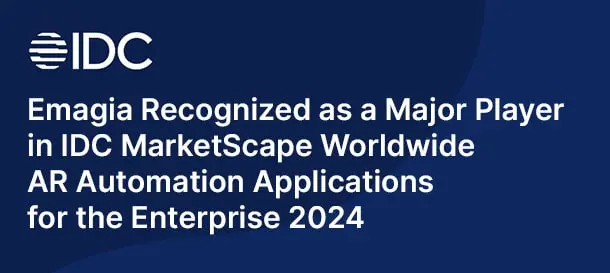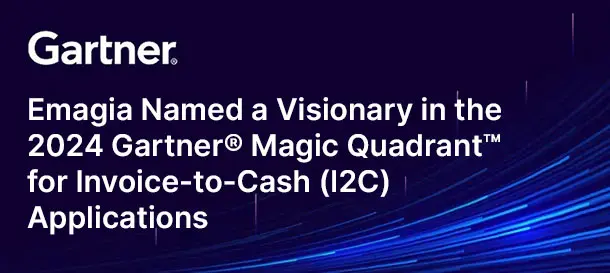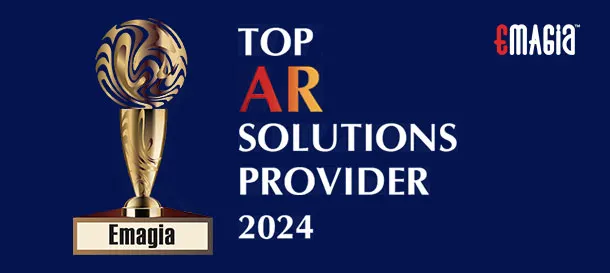In today’s fast-paced business world, smart financial management isn’t just nice to have – it’s crucial. At the heart of this efficiency lies the often-overlooked process of coding invoices. It’s more than just assigning numbers; it’s about strategically categorizing incoming bills. This transforms raw financial data into clear, actionable insights. Done right, invoice coding leads to accurate financial reporting, smooth expense tracking, and solid financial decision-making. We’re diving deep into the world of coding invoices, looking at the best ways to do it, common hurdles, and how automation can completely change the game. We’ll also focus on making your accounts payable invoice process as efficient as possible, touching on how banking coding plays a role and why a thorough coding review before invoicing is so important.
Understanding Invoice Coding: Your Financial GPS
Invoice coding is simply giving specific labels or invoice codes to each item on an invoice. These codes link your expenses to the right categories in your company’s general ledger (GL) and chart of accounts. This organized method ensures every dollar spent is carefully tracked and assigned.
What Does Invoice Coding Really Mean?
It means breaking down an invoice to spot key details: who the vendor is, what kind of expense it is, which department or project it belongs to, and any tax implications. Each of these details then gets matched to an invoice code (or a few codes) in your accounting system. This detailed approach is vital for:
- Spot-on Financial Reports: Making sure your financial statements truly reflect your company’s health.
- Smarter Budgeting and Forecasting: Giving you the granular data needed for better financial planning and predicting future needs.
- Clear Audit Trails: Creating a straightforward, traceable record of every transaction, which makes both internal and external audits a breeze.
- Staying Compliant: Ensuring you stick to tax laws and financial regulations without a hitch.
Why Getting Your Invoice Codes Right Matters So Much
Wrong invoice codes can cause a ripple effect of problems: misstated financial reports, going over budget, compliance headaches, and missing chances to save money. When it comes to invoice coding, precision isn’t just good practice—it’s absolutely essential for any business aiming for financial integrity and smooth operations.
The Accounts Payable Invoice Process: Your Payment Pipeline
The accounts payable invoice process covers everything from when you receive an invoice to when you finally pay it. And right in the middle of this crucial workflow is invoice coding.
From Invoice Arriving to Payment Done: The AP Journey
Here’s how a typical accounts payable invoice process usually goes:
- Invoice Arrives: Invoices can show up in many ways—email, snail mail, or electronic data interchange (EDI).
- Data Capture: We pull out all the necessary info from the invoice. This is where invoice coding kicks off.
- Validation and Matching: The invoice is checked against purchase orders (POs) and goods received notes (GRNs). This often involves knowing how to PO an invoice and understanding the difference between are PO and non-PO invoices.
- Invoice Coding: Assigning the right GL codes, cost centers, departments, and so on.
- Invoice Approval: Sending the invoice to the right people for their OK.
- Payment Processing: Getting the payment ready and recording it.
- Record Keeping: Storing the invoice and all related documents for future reference.
Invoice AP vs. Accounts Payable Invoice: What’s the Difference?
While people often use these terms interchangeably, “Invoice AP” usually refers to an invoice once it’s officially in the Accounts Payable department’s system, meaning it’s now a recognized liability for the company. “Accounts Payable Invoice” is a broader term for any invoice that needs to be processed and paid by the accounts payable team. So, an “invoice AP” is a specific kind of “accounts payable invoice” that has started its journey through your AP system.
Common Hurdles in Coding Invoices: Navigating the Bumps
Despite its critical role, coding invoices often comes with challenges, especially when done manually. Knowing these obstacles is the first step to overcoming them.
Manual Errors and Inconsistencies: The Human Factor
Human error is probably the biggest challenge. Typing in the wrong invoice codes, misclassifying expenses, or missing small details can lead to big problems. Plus, if different people or departments use inconsistent invoice coding practices, your financial picture gets messy, making analysis and audits tough.
Slow Approvals and Bottlenecks: The Waiting Game
Manually sending invoices around for approval can cause significant delays, potentially damaging vendor relationships and even leading to late payment fees. Complex approval workflows, especially when an invoice needs multiple signatures, just make these bottlenecks worse.
Lack of Clear View and Data Silos: The Hidden Information
Without a central system, it’s hard to get a real-time view of how your accounts invoice processing is going. When data is scattered across spreadsheets and physical files, it creates silos that block efficient tracking and reporting.
Fraud Risks and Compliance Worries: Staying Safe and Legal
Manual processes are more vulnerable to fraud, like accidental duplicate payments or unauthorized transactions. Making sure you comply with various financial regulations, especially when dealing with specific tax codes, becomes a complex and error-prone task.
Best Practices for Effective Invoice Coding: Your Strategy for Success
Adopting strong best practices is essential to tackle the challenges of coding invoices and supercharge your accounts payable invoice process.
Standardizing Your Invoice Code Structures: Keeping It Consistent
Create a clear, comprehensive, and consistent chart of accounts. Every invoice code should have a defined purpose and be easy for everyone to understand. This standardization is crucial, especially for bigger companies where different teams handle invoice AP.
Integrating with Purchase Orders (POs): The Power of Matching
A robust PO system is key to efficient invoice coding. Matching invoices to their corresponding purchase orders (PO matching) significantly cuts down errors and ensures you only pay for authorized expenses. Knowing how to PO an invoice correctly smooths out your entire procure-to-pay cycle.
Using an Accounts Payable Invoice Template: For Uniformity
Using a standardized payable invoice template for invoices you receive (if possible) or an internal template for coding helps keep data capture consistent. You can also apply this idea to creating your own payable invoice template for invoices you send out, ensuring clarity for your clients and reinforcing good overall invoice hygiene.
The Handy Invoice Coding Stamp: A Timeless Tool
An invoice coding stamp, while it might seem old-fashioned, can be really effective in a mixed (manual and digital) environment. It provides a consistent framework for manually adding key invoice codes and approval details directly onto physical invoices, making sure all necessary info is captured before digital entry or scanning.
Setting Up a Solid Coding Review Before Invoicing: The Double Check
A “coding review before invoicing” is often part of the wider invoice approval workflow. It’s the vital step where a supervisor or finance team member checks the assigned invoice codes for accuracy and compliance with company policies, all before the invoice moves closer to payment. You might also hear this called an “accounts payable invoice review” or “GL coding review.”
The Game-Changing Power of Automated Invoice Coding
Automating your invoice coding process isn’t a luxury anymore; it’s a must-have for businesses aiming for efficiency, accuracy, and growth.
Perks of Automated Invoice Coding
Automated solutions, powered by tech like Optical Character Recognition (OCR) and Artificial Intelligence (AI), offer a ton of benefits:
- Super Accuracy and Consistency: Automation drastically cuts down on manual data entry mistakes and makes sure invoice codes are applied consistently.
- Faster Processing: Invoices are captured, coded, and sent for approval much quicker, leading to on-time payments and better relationships with vendors.
- Big Cost Savings: Less manual work directly means lower operating costs for you.
- Clearer View and Real-time Reports: Automated systems give you instant insights into invoice status and spending patterns, helping you make smarter decisions.
- Better Compliance and Audit Prep: Automated audit trails and adherence to rules strengthen your internal controls and make audits much easier.
- Scalability: Your business can handle more invoices without needing to hire tons more staff, which is huge for growing companies dealing with complex accounts invoice situations.
How AI and Machine Learning Boost AP Coding
AI and Machine Learning (ML) push automation even further. These technologies can:
- Smart Data Extraction: Accurately pull out crucial information from all sorts of invoice formats.
- Suggest Codes: Learn from past data to suggest the right invoice codes, even for tricky or unusual invoices.
- Automate Matching: Perform two-way or three-way matching with incredible accuracy.
- Spot Oddities and Fraud: Flag unusual transactions or potential duplicate invoices for your review.
Banking Coding and Invoice Management: They Work Together
While they’re distinct, banking coding can both influence and be influenced by efficient invoice management.
Understanding Banking Coding in Payments
Banking coding mostly refers to the internal codes banks use to categorize transactions for reporting, compliance, and their own reconciliation. While it’s not directly part of invoice coding, accurate invoice coding makes it much easier to match your outgoing payments with your bank statements. This ensures your financial ledger perfectly matches your actual cash flow. Some advanced AP systems even let you assign a “Bank Code” to an invoice, which helps in grouping invoices for payment runs from specific bank accounts, making check printing and reconciliation smoother.
Transforming Your AP with Emagia: Beyond Traditional Invoice Processing
Emagia is leading the charge in revolutionizing invoice coding and the entire accounts payable invoice process with advanced AI and automation. Emagia’s platform uses cutting-edge technology to completely change how businesses handle their finances, from capturing data to reconciling payments.
Emagia’s AI-powered solution automates your entire accounts payable workflow. It tackles the headaches of manual invoice processing head-on. With intelligent document processing and machine learning, Emagia can:
- Automate Data Extraction and Validation: It precisely pulls out critical information from any type of invoice, no matter the format, eliminating manual errors. This means accurate details for vendors, amounts, dates, and, most importantly, line-item specifics for perfect invoice coding.
- Intelligent Invoice Coding: Emagia’s AI learns from your past invoice codes and spending habits, automatically suggesting and applying the correct GL accounts, cost centers, and project codes. This dramatically boosts the accuracy and consistency of your ap coding, making the process faster and less prone to human error.
- Streamline Approval Workflows: You can set up custom, automated approval paths that send invoices to the right people based on your rules (like amount limits or department). This significantly cuts down on delays and bottlenecks common in manual accounts payable invoice processes.
- Enhance PO Matching: It seamlessly connects with your purchasing systems to automatically match invoices against purchase orders (how to PO), ensuring you only pay for goods and services that were actually ordered and received. This helps stop overpayments and unauthorized spending.
- Improve Visibility and Reporting: Get real-time dashboards and analytics that give you a complete picture of every accounts invoice, helping you track performance, spot trends, and make smarter financial decisions.
- Boost Compliance and Audit Readiness: It creates a complete, tamper-proof audit trail for every transaction, from when it’s received to when it’s paid. This ensures you stick to both internal policies and external regulations. Consistent invoice codes and automated workflows also make audits much simpler.
- Reduce Fraud Risks: With automated checks and balances, like spotting duplicate invoices and flagging anything unusual, Emagia helps protect your business from potential fraud.
By using Emagia’s smart automation, businesses can move past the limits of old, manual coding invoices. The solution minimizes manual work, speeds up processing, improves data accuracy, and frees up your finance team. They can then focus less on repetitive tasks and more on strategic financial management and analysis, ultimately leading to greater efficiency and profit.
FAQs: Your Questions on Coding Invoices Answered
What’s the main goal of coding invoices?
The main goal of coding invoices is to correctly categorize your expenses in your company’s financial records. This leads to accurate financial reports, smart budgeting, easier audits, and clearer insights into where your money goes.
What are the biggest challenges with invoice coding?
Key challenges include human errors from manual data entry, inconsistent use of invoice codes, slow approval processes, a lack of real-time visibility into invoice status, and the higher risk of fraud that comes with manual systems.
How does automation make invoice coding better?
Automation, especially with AI and OCR, vastly improves invoice coding. It accurately extracts data, suggests the right invoice codes based on past patterns, reduces manual mistakes, speeds up the entire process, and makes your data more consistent and compliant.
What’s an invoice coding stamp for?
An invoice coding stamp provides a standard way to manually add important details like GL codes, approval dates, and payment terms directly onto a physical invoice. This ensures that crucial information is captured consistently.
What do you call a review of coding before invoicing?
A coding review before invoicing is typically part of the broader invoice approval process. It’s often called a “GL coding review,” “accounts payable invoice review,” or simply “invoice approval and coding verification.”
What’s the difference between Invoice AP and Accounts Payable Invoice?
“Accounts payable invoice” is the general term for any invoice a company receives that needs to be paid. “Invoice AP” often refers to the specific status of an invoice once it’s officially entered into the accounts payable system, meaning it’s actively being processed by the AP department as a liability.
How can I create a simple payable invoice template?
A simple payable invoice template should include your business info, client details, a unique invoice number and date, payment due date, an itemized list of goods/services with quantities and prices, applicable taxes, and the total amount due. Many accounting software and online tools offer ready-to-use templates.
What does it mean to “PO” an invoice?
To “PO an invoice” means to confirm that an invoice you’ve received matches an existing purchase order (PO). This process, known as PO matching (often two-way or three-way matching), verifies that the goods or services billed were actually ordered and received, helping prevent unauthorized payments.
How does banking coding connect with invoice processing?
While not directly part of invoice coding, banking coding (internal codes banks use for transactions) can relate when AP systems let you assign a specific bank code to an invoice. This helps organize payment runs and reconciliation by linking invoices to the bank account they’ll be paid from. Ultimately, accurate invoice coding supports better reconciliation with your bank statements.
What is AP coding?
AP coding is a shorter way to say accounts payable coding. It’s the process of assigning general ledger (GL) codes, cost centers, departments, and other relevant accounting details to invoices within the accounts payable workflow. It’s essentially the same as invoice coding.
Conclusion: The Future of Coding Invoices is Smart and Automated
The financial world is always changing, and the need for precision when coding invoices has never been higher. While manual processes can be a huge drain and a source of mistakes, automation—especially with AI and machine learning—is completely transforming the accounts payable invoice process. By adopting these technologies and using the best practices for invoice coding, businesses can reach new heights of efficiency, accuracy, and financial control. From understanding the ins and outs of invoice codes and how to PO an invoice, to harnessing the power of an invoice coding stamp and robust ap coding systems, the path to strong financial health lies in smart automation. Investing in solutions that streamline your accounts invoice management isn’t just about saving money; it’s about building a financial framework that’s resilient, insightful, and ready for the future.




